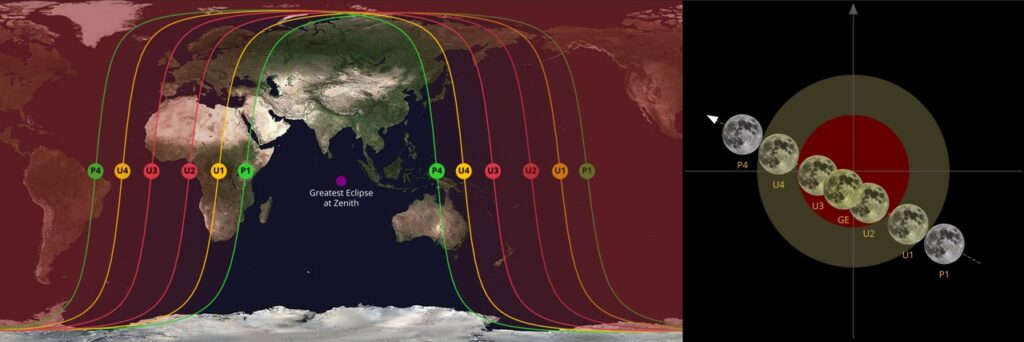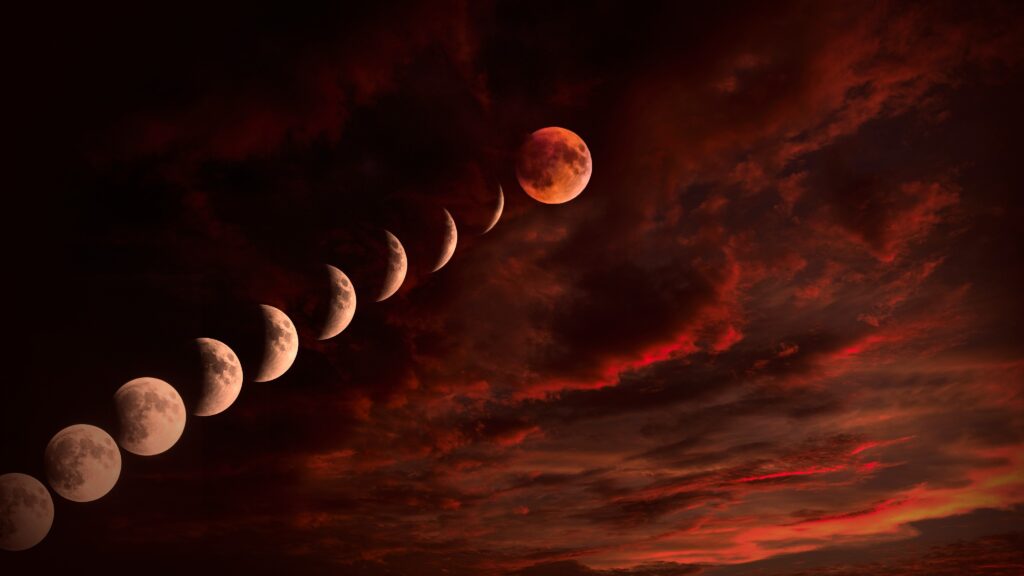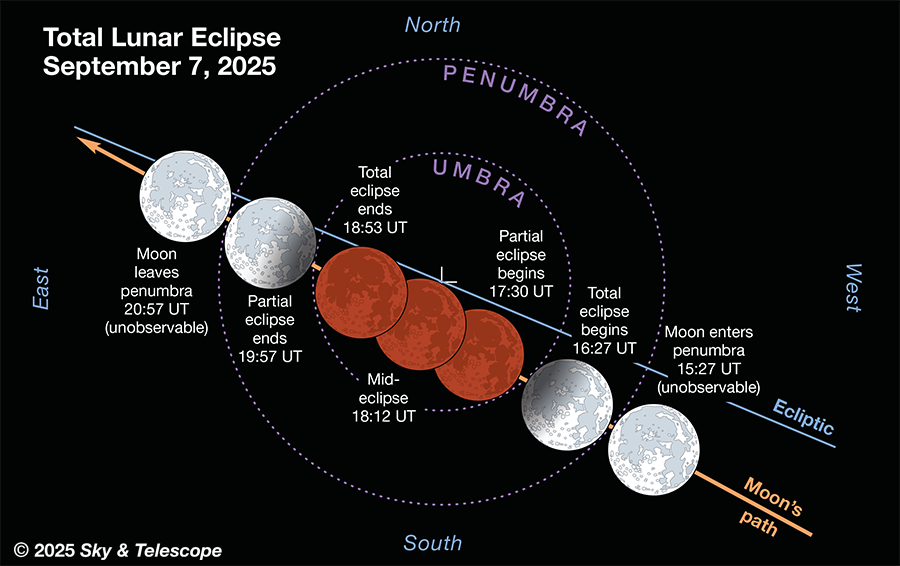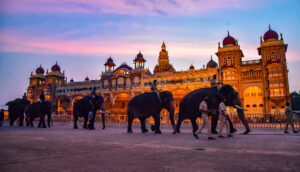Lead-In: A Dazzling Dawn of Science and Art
On the early morning of September 7–8, 2025, Sydney’s skyline was transformed by a rare and mesmerizing sight: the “Blood Moon” of a total lunar eclipse rising behind the iconic Opera House. Captured using the technique known as telephoto compression, this image blends astronomical precision with photographic artistry—resulting in a scene as scientifically profound as it is visually breathtaking.
This evening’s script unpacks the cosmic mechanics behind the phenomenon, the unique optical effects at play, and the photographic craft that made this moment unforgettable.

Part 1: The Cosmos Aligns—Understanding the Total Lunar Eclipse
What Happened Astronomically
- On September 7, 2025, the Earth slipped directly between the Sun and the full Moon, creating a total lunar eclipse during which the Moon entered Earth’s darkest shadow—its umbra WikipediaThe Times of India.
- This eclipse wasn’t just total—it was long. Totality lasted approximately 82 minutes—a rare extended moment in deep shadow WikipediaThe Times of India.
- The umbra’s reddish cast stems from Rayleigh scattering: sunlight filters through Earth’s atmosphere, blue wavelengths scatter out, and red/orange wavelengths bend inward—painting the lunar surface in haunting hues People.comNews.com.auWikipedia.
Why This Eclipse Stood Out
- Visibility from Sydney and across Australia made it the continent’s first total lunar eclipse since 2022—and the last until 2028 News.com.au+1.
- The timing varied across the continent, but in Sydney, the partial phase began at roughly 2:30 a.m. AEST, with totality spanning 3:30 to 5:00 a.m., although eastern viewers missed the final moments due to moonset approaching sunrise News.com.auABC.
- This eclipse was part of an ongoing celestial sequence—Saros series 128—marking the 41st of 71 in the cycle, part of a rare almost-tetrad of total lunar eclipses in 2025–2026 Wikipedia.
Part 2: A Rising Blood Moon – The Visual Spectacle

The Moment Captured
- At moonrise, the lunar disk—now in deep red—is seen dramatically juxtaposed against the Opera House, creating an iconic silhouette.
- Crowds across Sydney looked skyward, enthralled as astronomer Dr. Laura Driessen affirmed that, despite urban light, clear conditions would yield a memorable show News.com.au+1.
- Alongside the eclipse, Saturn shone brightly nearby, enriching the nighttime tableau for keen observers News.com.au.
Part 3: Photographic Technique Unveiled—Telephoto (Lens) Compression
Defining the Illusion
- Telephoto compression (or lens compression) involves using a long focal length (e.g., 300–600 mm) while positioning the camera far from the subject.
- This flattens perceived distance, making distant objects—like the Moon—appear large relative to nearer subjects such as buildings Facebook+1.
- The technique is optical, not metaphorical: the distant object isn’t physically larger, but appears so in the frame—imparting dramatic scale.
How the Effect Was Achieved
- The photographer stood at significant distance from the Opera House, using a telephoto lens, likely in the 300–500 mm range, to magnify the lunar disk in proportion to Sydney’s landmark Facebook.
- This strategic spacing allowed the full red Moon’s apparent size to dominate the skyline without cropping the opera house from the scene—ensuring both were in dramatic balance.
Complementary Technical Considerations
- A stable tripod or tracking mount would be essential to prevent motion blur, especially with longer exposures at night Sky at Night Magazine.
- Manual focus locked on the lunar edge, aperture around f/8–f/11, and ISO settings balanced for sharp detail and minimal grain.
- Pre-focusing and securing the lens—as advised by astrophotographers—is critical to ensure precise framing when the Moon rises Sky at Night Magazine.

Part 4: Field Strategy—Planning, Timing, Execution
Scouting & Preparation
- Photographers used planning tools like PhotoPills to predict lunar rise azimuths, elevation, and ideal vantage points aligned with landmarks PhotoPills.
- Pre-event rehearsals were advised—choosing shooting spots, testing focus settings, and practicing under similar lighting conditions Sky at Night Magazine.
On the Night
- Arriving early allows for final focus tweaks and adjustment to unexpected clouds or haze.
- Use of planetarium apps or sky simulators helped align the horizon scene with celestial mechanics to ensure the Moon would align with the Opera House in the frame Sky at Night Magazine.
- Considering exposure: shorter shutter speeds highlight lunar surface details; longer exposures bring out subtle umbral color—but demand perfect stability Sky at Night Magazine.
Optimizing Gear
- A DSLR or mirrorless camera with a long lens (400 mm or more) is ideal.
- Tripod or tracking mount ensures sharpness; manual focus lock prevents shift; low ISO retains detail, while manual or timed exposures avoid camera shake Sky at Night Magazine.
- For smartphone users, capturing the eclipse is still possible: use night mode, RAW capture, avoid digital zoom, and keep the phone steady—though a telephoto setup yields much more dramatic results The Times of India.

Part 5: Scientific and Artistic Legacy
Educational Impact
- The event served as a real-life astronomy lesson—observing celestial alignment, light scattering, and orbital dynamics in real time The Times of India.
- It highlighted atmospheric optics—showcasing Rayleigh scattering and Earth’s atmospheric influence visually, in a way that textbooks can’t replicate.
Visual Culture
- Stunning captures like this one—featuring Sydney’s architecture under cosmic duress—resonate across media, inspiring public interest and social media sharing News.com.au.
- Photographers worldwide captured variations of the “Super Blood Moon” in locations from Ramallah to Tokyo, reinforcing the shared global experience People.com.
Astronomical Significance
- As one of the longest total eclipses of the decade, this Blood Moon stands out—both for its duration and for its dramatic appearance near lunar apogee WikipediaThe Times of India.
- It forms part of a rare tetrad sequence visible across 2025–2026—making it a noteworthy chapter in eclipse cycles Wikipedia.
Stargazing at the Intersection of Science and Art
The September 7–8, 2025 total lunar eclipse wasn’t only a celestial spectacle—it was a moment where science and creative visualization converged. Through telephoto compression, the Moon appeared vast and commanding behind Sydney’s iconic silhouette—distorting distance, yet enhancing meaning.
This photograph stands as a testament—to cosmic mechanics, thoughtful planning, and the artistry embedded in scientific observation—drawing viewers not just to witness, but to understand, the interplay between the heavens and our lens.







More Stories
Maithili Thakur: From Folk Singing Sensation to Rising Political Star
Mysuru Dasara: The Royal Festival of Karnataka – History, Culture, and Celebration
Global Data Centres 2025: Who’s Spending What -and Why It Matters